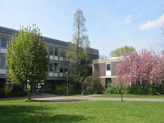 MINT sitemap
MINT sitemap
|
Kommentare der WHO Beauftragten für's Shisha-Rauchen zum WSC-ProjektHier also ein paar der Mails, die wir von den zwei Top-Fachleuten im Bereich Shisha erhalten haben. Die WHO-Empfehlungen, die auch für die Bundesregierung die Grundlage für Empfehlungen darstellen, beruhen auf Forschungsergebnissen der Arbeitsgruppen dieser beiden Wissenschaftler. From: Alan Shihadeh [mailto:xxx] Sent: Dienstag, 13. März 2007 22:48 To: Weird Science Club Darmstadt Subject: Re: german science fair project verifies your mainstream smoke shisha analysis This project sounds wonderful. The students should indeed be commended and should think about publishing the results. I look forward to seeing the poster (it hasn't arrived yet). FYI, we had the same findings regarding PAH and CO with respect to charcoal as the main source (a student did his master's thesis at AUB on this topic recently). The topography sounds off to me, however. In particular, a continuous inhalation of 10 s spaced at 10 s intervals seems too demanding for a long, leisurely smoking habit (try breathing normal air according to that regimen, and I think you'll agree). I would be interested to know more about how the spirometry device was configured and how the flow signal looked during each puff. Nonetheless, this is a very impressive research project. I congratulate you and your students. Alan Shihadeh Associate Professor Mechanical Engineering Department American University of Beirut Principal Investigator Aerosol Research Lab After that mail, we explained the shisha group use that is typical for Germany and our system setup. This is, what Alan answered: From: Alan Shihadeh [mailto:xxx] Sent: Donnerstag, 15. März 2007 05:38 To: Milan Dlabal Cc: Thomas Eissenberg Subject: Re: german science fair project verifies your mainstream smoke shisha analysis That explains it! Prof Tom Eissenberg and I recently wrote a proposal to study the effect of group use on smoking topography parameters. We had hypothesized that the smoking would be more intense and possibly result in a greater production of carcinogenic compounds per narghile. Your students' data definitely indicates that the smoking regimen is considerably more intense for the group smokers than my individual smokers. I looked at the poster and it is indeed impressive. Regarding the measurements with 42 smokers, how many waterpipes did that involve? Also, I am curious about the use of the spirometer. Was it calibrated for use with the waterpipe? And where was it attached? Did it remain trouble-free during all the measurements? Any idea whether the additional flow resistance is significant compared to the flow resistance of the waterpipe? The smoking machine looks great. Was the flow modulated digitally or by simple solenoid action (i.e. on/off, with the flow regulated by a needle valve)? What smoking regimen was used to generate the results? Is it common for high-school students to have access to GC/MS in Germany?! Regarding the role of the water in filtering tar or nicotine, I'm currently doing some detailed measurements and finding that the water filters little of either, despite my 2003 findings. My previous findings didn't take into account the infiltration of fresh air into the hose during normal smoking; when the water is removed, there is little infiltration (since the water is the main pressure drop in the system, creating significant vacuum in the hose) and the smoke enters the machine un-realistically undiluted. The higher "tar" yeilds measured with the charcoal-only condition (compared to the normal charcoal+tobacco) do not seem reasonable to me. My measurements indicate that more than 95% of the "tar" originates in the tobacco. Again, very impressive work, and even more so given that it was executed by high-school students. I highly encourage your students to publish the results in a scientific journal. Best regards, Alan From: Thomas E Eissenberg/FS/VCU [mailto:xxx] Sent: Donnerstag, 15. März 2007 12:32 To: Milan Dlabal Subject: Re: german science fair project verifies your mainstream smoke shisha analysis Guten morgen: I have not seen the poster (may I please have a PDF?) but I echo Alan's words of encouragement. This sounds like outstanding and innovative research and I hope these young scientists maintain their enthusiasm and effort. If so, they can look forward to brilliant careers. I must add that I am so pleased to see some empirical evidence in support of the hypothesis that Alan mentioned -- that group use could lead to a more intense smoking relative to individual use. I don't suppose the temperature of the tobacco was monitored under the two conditions? I think Alan and I would predict a higher temperature for tobacco during group relative to individual use. Again, my congratulations to you and your students for this outstanding work. vielen Dank, Tom E. Thomas Eissenberg, Ph.D. Associate Professor of Psychology and Institute for Drug and Alcohol Studies Virginia Commonwealth University letzte Änderung: 28.12.2009 |
|